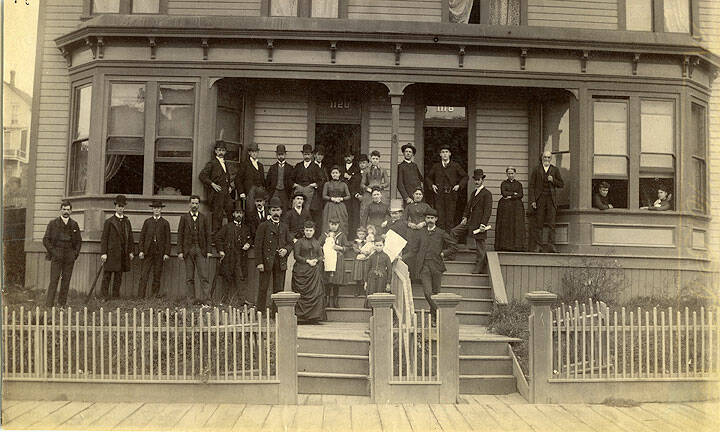Welcome to your local Airbnbust
By Morf Morford, Tacoma Daily Index
As part of the uber-ization of everything, AirBnb seemed like the ultimate answer – and opportunity.
Short-term rentals were the answer for travelers and people on a budget, and, of course, for those with property to rent, an almost limitless additional stream of income.
According to data from vacation rental research firm AirDNA, low interest rates combined with remote work opportunities have created an ideal model for setting up an AirBnb, and many have. 66,000 new rental properties were listed in October 2022 alone.
The thrill is gone
But like every other aspect of the digital/cyber/uber economy, the short-term rental strategy is losing its appeal.
What seemed like an affordable answer to high-priced hotels has become, in too many cases, just another set of complicated problems.
When AirBnbs cost about the same as a hotel, which usually offers more amenities and better security (and sometimes packages or perks, like airline miles), what’s the difference?
For one thing, some cities don’t like them
In the beginning, short-term rentals were relatively unregulated, and there are still many cities that only require hosts to apply for a short-term rental license.
But more and more local governments are tightening short-term rental rules due to criticism that a vacation rental glut is limiting the availability of affordable rental housing in a community.
Housing, as you may have noticed, has become a hot issue in almost every neighborhood and municipality.
The last thing any region needs is for critical housing to be taken off the market.
Cities are responding in different ways. In New York, for example, short-term rentals of less than 30 days are prohibited unless the host is present and guests have free access to the entire unit.
In San Francisco, short-term rentals must be primary residences where the owner lives at least 275 days per year.
In a similar approach, Denver only allows landlords to apply for a short-term rental license for their primary residence.
Popular tourist areas aren’t all that different – if big cities that rely on tourism revenue place stringent requirements on rental property owners, it’s likely to happen anywhere.
Many neighbors don’t like them either
Those who live near hotels (or other commercial areas) know what to expect.
An AirBnb in a residential neighborhood violates all of the premises of a residential neighborhood.
Renters coming and going at all hours of the night is not what most buyers accepted when buying their homes.
AirBnbs too often become impromptu party spots.
I spoke to an AirBnb owner whose house had been ransacked by a wild party. Although she lived next door, the several thousand dollars in damage destroyed her home, kept her off the market for several months and angered her neighbors. One of the tenants had a rich dad who footed the bill.
Investor beware
As we all know, house prices and mortgage rates have risen, fallen and swirled across the spectrum.
Gone are the days (and promises) of almost hassle-free automatic success as an AirBnb owner.
As an investor, especially in sought after areas, you may see an oversupply of properties in your market.
A deep, or even not so deep, recession could dampen demand for vacation rentals in general.
Or changing local regulations could prevent you from fully listing your property as a short-term rental.
Pensions
The ultimate irony, of course, is that there’s nothing new about affordable short-term rentals.
For most of the 19th century and roughly half of the 20th century, boarding houses were a mainstay for immigrants, travelers and anyone else on the move – which was almost everyone at the time.
Many of these places were cash-only and required little to no deposit, credit, or background checks, and were the lodging choice for new workers, students, and anyone else on the move.
Most of them are rented by the day, week or much longer.
Homeowners could rent a vacant bedroom or two, or larger homes were built with a view to a greater number of occupants. Either way, two important needs were met; short-term accommodation was available for those of limited means and a “work from home” industry was found.
At the time, there were several options for temporary housing. From the local ‘Y’ to guest rooms to boarding houses and residential hotels, housing suitable for those in need of on-the-fly housing was the basic housing solution for many people and the most cities.
For some reason, most cities have closed and banned boarding houses, which led to the obvious question; where are these people going?
Another irony is that our current system and the atrocious prices of housing (to rent or to buy) have led, inevitably some would say, to something we in America have never seen before; widespread dislocation/homelessness across all ages and family configurations.
Affordable housing is not far and out of reach. We (and virtually every other nation) have had it for centuries.
Zoning and other public policies dictate what gets built – and where. The question, as always, is the intent and purpose of the build.
Are we building shelters for those in need? Or are we building investment vehicles primarily for profit without considering those who obviously still need stable, even temporary shelter.
Our decisions and policies are deliberate and their impacts reverberate over many decades and leave their mark on our lives and the choices we have (or had) about housing.


Comments are closed.